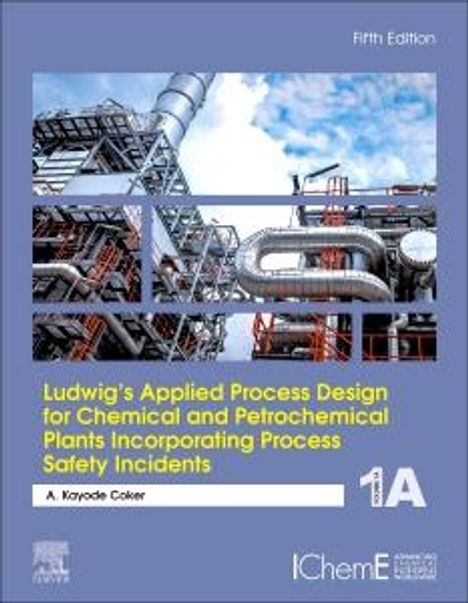A Kayode Coker: Ludwig's Applied Process Design for Chemical and Petrochemical Plants Incorporating Process..., Gebunden
Ludwig's Applied Process Design for Chemical and Petrochemical Plants Incorporating Process Safety Incidents
- Volume 1a
(soweit verfügbar beim Lieferanten)
- Verlag:
- Elsevier Science, 07/2024
- Einband:
- Gebunden
- Sprache:
- Englisch
- ISBN-13:
- 9780323917193
- Artikelnummer:
- 11081105
- Umfang:
- 1326 Seiten
- Nummer der Auflage:
- 24005
- Ausgabe:
- 5th edition
- Gewicht:
- 2957 g
- Maße:
- 277 x 221 mm
- Stärke:
- 56 mm
- Erscheinungstermin:
- 11.7.2024
- Hinweis
-
Achtung: Artikel ist nicht in deutscher Sprache!
Weitere Ausgaben von Ludwig's Applied Process Design for Chemical and Petrochemical Plants Incorporating Process Safety Incidents |
Preis |
|---|
Klappentext
Ludwig's Applied Process Design for Chemical and Petrochemical Plants Incorporating Process Safety Incidents is ever evolving starting with the first edition some 60 years ago. The volumes in this fifth edition provide improved techniques and fundamental design methodologies to guide the practicing engineer in designing process equipment and applying chemical processes to the properly detailed hardware. As indicative of the new title, process safety incidents are incorporated in many of the chapters, reviewing the root causes, and how these could be mitigated in future. Like its predecessor, this new edition continues to present updated information for achieving optimum operational and process conditions and to avoid problems caused by inadequate sizing and lack of internally detailed hardware. The volumes provide both fundamental theories where applicable and direct application of these theories to applied equations essential in the design effort. This approach in presenting design information is essential for troubleshooting process equipment and in executing system performance analysis. Volume 1A covers (chapters 1 - 6), process planning, flow-sheeting and scheduling, cost estimation and economic, physical properties of liquids and gases, fluid flow, mechanical separations. It builds upon Ernest E. Ludwig's classic text to further enhance its use as a chemical engineering process design manual of methods and proven fundamentals. This new edition contains twelve chapters, which include new content on three-phase separation, mixing of liquids, ejectors, and mechanical vacuum systems, process safety and pressure relieving devices, metallurgy and corrosion, and optimization of chemical process / blending. The chapters in Volume 1A review pressure-relieving devices and provide case studies for process safety incidents, which are well illustrated from US Chemical Safety Hazard Investigation Board (www. csb. gov). Finally, this book contains an extensive glossary of Petroleum and Petrochemical Terminologies and Physical and Chemical Characteristics of Major Hydrocarbons


